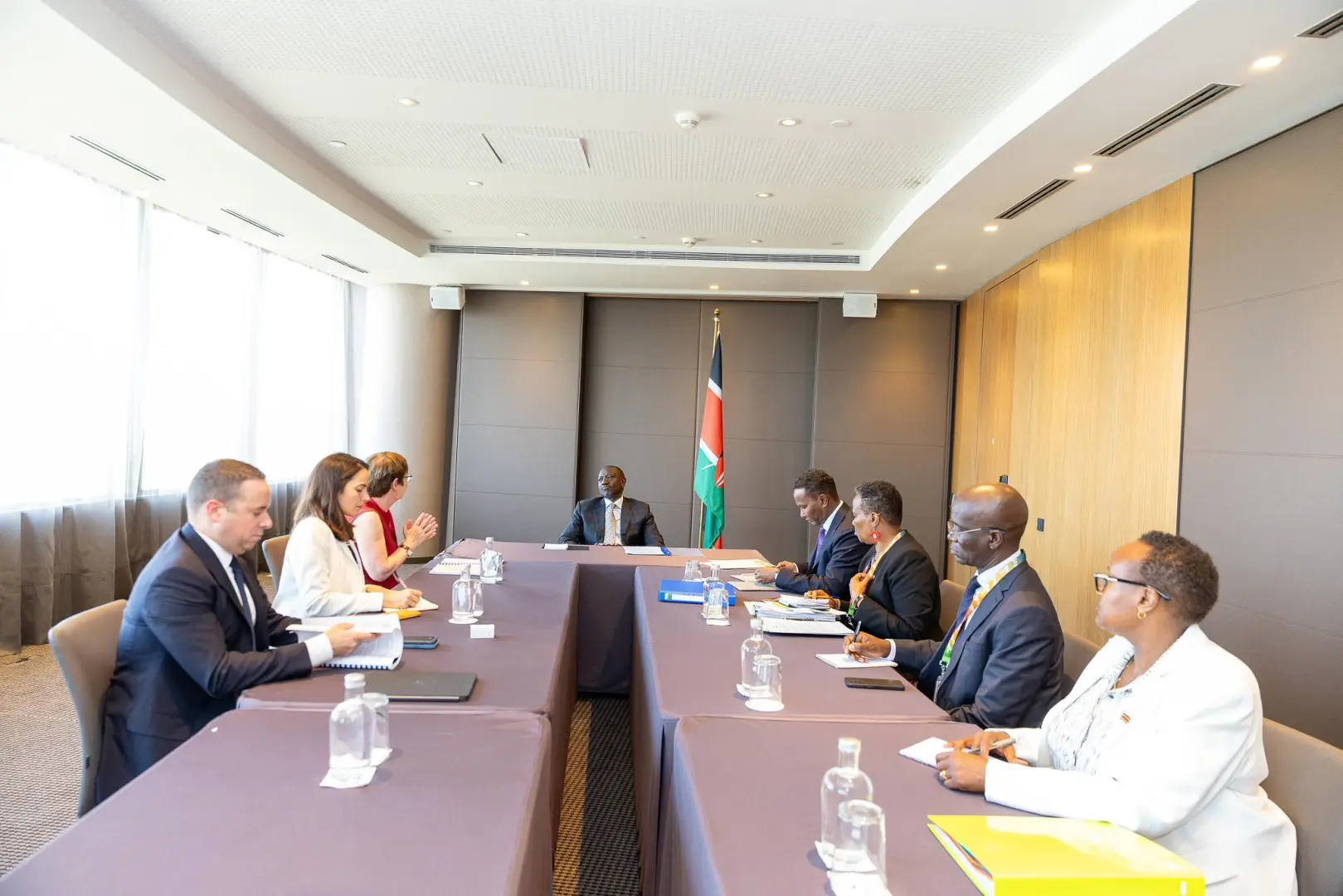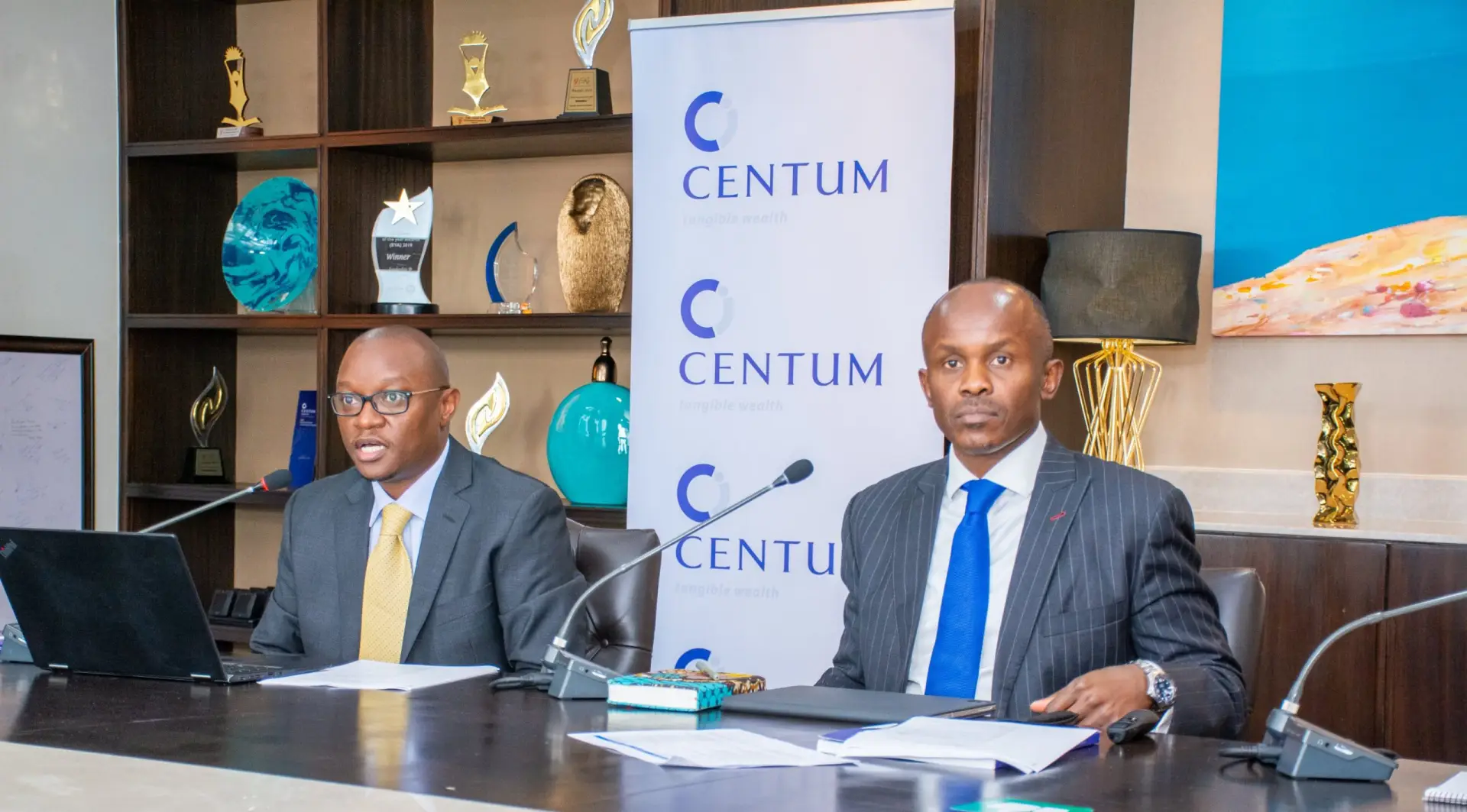As the global economy faces renewed turbulence, a new UNDP policy paper warns that the debt crisis plaguing the world’s poorest economies is reaching unprecedented levels. In a stark message issued ahead of the G20 finance ministers and central bank governors meeting in South Africa, the United Nations Development Programme (UNDP) called for a comprehensive multilateral debt relief deal that includes all creditors—a proposal that “warrants serious attention.”
Rising Debt Service Burdens: A Growing Threat
According to the UNDP report published on February 25, 2025, debt servicing has become a critical issue for developing nations. The report reveals that interest payments on debt now exceed 10% of government revenues in 56 developing countries—almost double the number recorded a decade ago. Alarmingly, 17 of these nations are spending over 20% of their revenue on interest payments, a threshold strongly linked to heightened default risks. These rising burdens, unseen in over two decades, threaten to derail development progress in some of the world’s most vulnerable economies.
UNDP Administrator Achim Steiner warned, “The debt-development trade-offs threaten a lost decade of development progress for many of the world’s poorest nations.” This statement underscores the urgency of addressing debt distress, which forces governments to divert resources from crucial investments in health, education, and infrastructure toward debt servicing.
The Scale of the Crisis
The report highlights that the external debt of the 31 poorest countries at high risk of debt distress now stands at just over US$200 billion. While this figure might appear modest compared to global debt levels, it is equivalent to less than a third of the International Monetary Fund’s (IMF) allocation of Special Drawing Rights (SDRs) in 2021. The SDR allocation, primarily directed toward wealthy nations, saw a commitment from these countries to rechannel some of their unused SDRs back to the IMF. This mechanism was intended to allow the IMF to offer low-interest loans to low-income countries—a critical lifeline that many developing nations are yet to fully tap into.
The UNDP report suggests that a new multilateral debt relief deal—if roughly modelled on the average 60% debt stock reduction achieved through the Highly Indebted Poor Countries (HIPC) initiative launched nearly three decades ago—could potentially save these 31 countries nearly US$80 billion. With an extended repayment period of an additional seven years, the savings could increase to approximately US$100 billion. Such a deal would relieve significant fiscal pressure and allow these nations to redirect resources toward sustainable development.
Background: The Legacy of the HIPC Initiative
Nearly 30 years ago, the HIPC initiative was launched to address the crippling debt burdens of the poorest nations. At its peak, the HIPC program achieved an average debt stock reduction of 60% for participating countries. While the initiative provided a crucial lifeline and spurred economic recovery in many regions, the global economic landscape has since evolved dramatically.
Today, the debt crisis is compounded by new challenges: the aftermath of the COVID-19 pandemic, volatile commodity prices, rising global interest rates, and the lingering effects of geopolitical conflicts such as the Russia-Ukraine war. These factors have not only increased borrowing costs but also reduced government revenues, making debt servicing a growing concern for developing nations.
The Debt-Development Trade-Off
The UNDP policy paper stresses that high levels of debt servicing impose severe trade-offs on development. With an ever-increasing share of government revenue dedicated to interest payments, these nations are forced to curtail essential spending on public services and infrastructure. This diversion of resources jeopardizes efforts to achieve the United Nations Sustainable Development Goals (SDGs), which aim to eradicate poverty, ensure quality education and healthcare, and promote economic growth.
For instance, countries in sub-Saharan Africa and parts of Asia, already grappling with challenges such as poor healthcare systems and inadequate educational facilities, now face the additional burden of meeting unsustainable debt obligations. The result is a vicious cycle where debt servicing limits investments in growth-enhancing areas, further stifling economic recovery and social development.
International Response and the Call for a New Relief Deal
The current debt crisis has elicited a range of responses from international organizations. The IMF, World Bank, and UN agencies have long been advocating for comprehensive debt restructuring and relief measures. However, the UNDP’s recent policy paper takes a decisive step further by calling for a new multilateral debt relief deal that encompasses all creditors—including bilateral, multilateral, and private lenders.
This holistic approach is seen as crucial in ensuring that relief efforts are not piecemeal. In the past, debt relief measures often focused on official bilateral loans, leaving significant portions of debt owed to private creditors unaddressed. As a result, even after receiving relief on one front, many countries continued to struggle with overall debt burdens that were unsustainable.
The proposed new deal is expected to incorporate a range of policy measures, such as:
- Debt Stock Reduction: Mirroring the HIPC initiative, a targeted reduction of up to 60% of the debt stock could be negotiated, providing immediate fiscal space for vulnerable nations.
- Extended Repayment Periods: Lengthening the repayment period would lower annual debt servicing obligations, allowing governments to reallocate funds toward developmental priorities.
- Lower Interest Rates: Offering loans at below-market rates through mechanisms such as rechanneled SDRs could help ease the cost burden.
- Inclusion of All Creditors: A truly comprehensive deal must bring all creditors to the negotiating table, ensuring that relief is balanced and effective.
The Role of Global Financial Institutions
Global financial institutions like the IMF play a pivotal role in shaping the international debt architecture. In 2021, the IMF allocated a substantial amount of SDRs, predominantly to advanced economies. However, the intention was to eventually rechannel a portion of these unused resources to support low-income countries. This process is crucial because it allows for the provision of funds at lower interest rates, a mechanism that could be integral to the proposed new debt relief deal.
Critics argue that while the SDR rechanneling process has started, it has not yet met the urgent needs of developing nations. With the debt service burden now exceeding safe thresholds in many countries, the pace of relief and restructuring must accelerate. The UNDP’s policy paper serves as a clarion call for richer nations to not only reallocate their SDRs more efficiently but also to engage actively in formulating a cohesive global strategy for debt relief.
The Impact of Rising Global Interest Rates
One of the key drivers behind the worsening debt crisis is the global rise in interest rates. In recent years, central banks around the world have been tightening monetary policy to combat inflation. While necessary for stabilizing domestic economies, these actions have a pronounced impact on developing countries that rely on external borrowing. Higher global interest rates increase the cost of new borrowing and exacerbate the debt servicing burden for countries with existing loans.
For many low-income nations, higher interest rates mean that even modest economic growth may not be sufficient to cover the increased cost of debt. This scenario creates a precarious balance where governments must either cut critical social spending or risk defaulting on their loans—a situation that would have devastating consequences for millions of citizens.
Case Studies: Countries on the Brink
Several countries illustrate the severity of the crisis. In recent years, nations such as Mozambique, Ecuador, and certain West African countries have struggled under the weight of their debt obligations. These countries, which once benefitted from concessional loans and international aid, now find themselves in a situation where a significant portion of their limited revenues is consumed by debt servicing.
For example, Mozambique has been grappling with a combination of high external debt and volatile commodity prices. The country’s experience underscores how external shocks—such as fluctuations in global commodity markets—can amplify existing fiscal challenges. Similarly, several Latin American nations have seen their debt-to-revenue ratios soar amid economic downturns, forcing them to prioritize debt repayments over essential public services.
Such case studies reinforce the urgency of a new debt relief deal that addresses the root causes of unsustainable borrowing and creates a pathway toward fiscal stability and sustainable development.
Policy Recommendations and Future Outlook
The UNDP policy paper does more than just highlight the problem—it also lays out a series of policy recommendations that could form the basis of a new international debt relief framework. Key recommendations include:
- Comprehensive Negotiations: Engaging all creditor groups in negotiations is essential. Without the participation of private creditors and emerging lenders, any relief deal will be inherently incomplete.
- Transparent Monitoring and Accountability: Establishing robust monitoring mechanisms to ensure that debt relief translates into real fiscal space for development spending. This includes tracking the rechanneling of SDRs and ensuring that relief funds are used effectively.
- Strengthening Domestic Fiscal Policies: While international relief is critical, developing nations must also implement domestic reforms to improve revenue collection, enhance public financial management, and reduce dependency on external borrowing.
- International Coordination: Global economic challenges require a coordinated response. The upcoming G20 meeting in South Africa presents an opportunity for major economies to align their policies, offer technical assistance, and support multilateral debt relief initiatives.
The Human Cost of Debt
Beyond the economic statistics, the debt crisis has profound human implications. As governments are forced to allocate ever-larger portions of their budgets to servicing debt, essential services such as healthcare, education, and social welfare suffer. In many developing nations, this trade-off has already led to reduced access to quality healthcare and deteriorating educational facilities, further entrenching poverty and inequality.
The human cost of debt is perhaps best illustrated by the struggles of everyday citizens. In countries where public spending on infrastructure and services is slashed due to debt obligations, communities face inadequate access to clean water, unreliable electricity, and insufficient healthcare. These challenges create a cycle of poverty that hinders long-term development and social mobility.
The Role of Civil Society and Advocacy Groups
Civil society organizations and advocacy groups have also been vocal in calling for urgent debt relief measures. These groups argue that the current debt burden not only stifles economic growth but also undermines the fundamental rights of citizens. Campaigns led by international non-governmental organizations (NGOs) emphasize that debt relief is not merely a financial issue—it is a matter of human rights and social justice.
Advocacy efforts are increasingly calling on international financial institutions and creditor nations to recognize that unsustainable debt hampers progress toward the Sustainable Development Goals. By redirecting resources from debt servicing to social and economic development, countries can invest in education, healthcare, and infrastructure—essential components for breaking the cycle of poverty.
Global Solidarity in Times of Crisis
The current debt crisis presents a stark reminder of the interconnectedness of the global economy. While developing nations bear the brunt of unsustainable borrowing, the ripple effects are felt worldwide. Economic instability in one part of the world can quickly spread, impacting global trade, investment, and financial markets.
In this context, the call for a new multilateral debt relief deal is also a call for global solidarity. Wealthier nations, international financial institutions, and private creditors all have a role to play in stabilizing the global economy. By working together to implement comprehensive debt relief measures, the international community can help create a more stable and equitable economic environment—one in which all nations have the opportunity to thrive.
Looking Ahead: A Roadmap for Recovery
The UNDP’s policy paper is not just a diagnosis of the current crisis—it is a roadmap for recovery. It outlines the need for immediate action to prevent a “lost decade” of development progress in the world’s poorest nations. The proposed debt relief deal, if implemented effectively, could free up tens of billions of dollars in fiscal space, allowing governments to invest in critical areas that drive long-term growth and resilience.
Key to this recovery will be a renewed commitment from all stakeholders to prioritize development over debt. This involves rethinking the global financial architecture, reassessing lending practices, and ensuring that future borrowing is sustainable and aligned with development objectives. The lessons learned from past initiatives like HIPC must inform current policy decisions, ensuring that relief efforts lead to structural reforms and sustainable fiscal management.
Conclusion: A Call to Action
The escalating debt crisis in developing nations represents one of the most pressing challenges of our time. With interest payments consuming an ever-increasing share of government revenues, the future of development in many of the world’s poorest countries hangs in the balance. The UNDP’s urgent call for a new multilateral debt relief deal that includes all creditors is a vital step toward addressing this crisis.
As global leaders prepare to convene at the G20 meeting in South Africa, the issue of debt relief must remain at the forefront of discussions. Only through coordinated international action, comprehensive policy reforms, and a commitment to global solidarity can the debt-development trade-offs be reversed, ensuring that vulnerable nations have the resources they need to build a more prosperous and sustainable future.
In a world where economic shocks can have far-reaching consequences, the proposed debt relief deal is not just a financial imperative—it is a moral one. The lives and futures of millions depend on the ability of the international community to act decisively and compassionately in times of crisis. The time to act is now, and the window for averting a lost decade of development is rapidly closing.
By embracing a holistic approach to debt relief—one that incorporates all creditors, extends repayment periods, and lowers interest rates—the global community can help unlock the development potential of the world’s poorest nations. In doing so, we not only stabilize fragile economies but also lay the foundation for a more inclusive and resilient global economy, where the benefits of growth are shared by all.
Ready to take your career to the next level? Join our dynamic courses: ACCA, HESI A2, ATI TEAS 7 , HESI EXIT , NCLEX – RN and NCLEX – PN, Financial Literacy!🌟 Dive into a world of opportunities and empower yourself for success. Explore more at Serrari Ed and start your exciting journey today! ✨
photo source: Google
By: Montel Kamau
Serrari Financial Analyst
27th February, 2025
Article, Financial and News Disclaimer
The Value of a Financial Advisor
While this article offers valuable insights, it is essential to recognize that personal finance can be highly complex and unique to each individual. A financial advisor provides professional expertise and personalized guidance to help you make well-informed decisions tailored to your specific circumstances and goals.
Beyond offering knowledge, a financial advisor serves as a trusted partner to help you stay disciplined, avoid common pitfalls, and remain focused on your long-term objectives. Their perspective and experience can complement your own efforts, enhancing your financial well-being and ensuring a more confident approach to managing your finances.
Disclaimer: This article is for informational purposes only and does not constitute financial advice. Readers are encouraged to consult a licensed financial advisor to obtain guidance specific to their financial situation.
Article and News Disclaimer
The information provided on www.serrarigroup.com is for general informational purposes only. While we strive to keep the information up to date and accurate, we make no representations or warranties of any kind, express or implied, about the completeness, accuracy, reliability, suitability, or availability with respect to the website or the information, products, services, or related graphics contained on the website for any purpose. Any reliance you place on such information is therefore strictly at your own risk.
www.serrarigroup.com is not responsible for any errors or omissions, or for the results obtained from the use of this information. All information on the website is provided on an as-is basis, with no guarantee of completeness, accuracy, timeliness, or of the results obtained from the use of this information, and without warranty of any kind, express or implied, including but not limited to warranties of performance, merchantability, and fitness for a particular purpose.
In no event will www.serrarigroup.com be liable to you or anyone else for any decision made or action taken in reliance on the information provided on the website or for any consequential, special, or similar damages, even if advised of the possibility of such damages.
The articles, news, and information presented on www.serrarigroup.com reflect the opinions of the respective authors and contributors and do not necessarily represent the views of the website or its management. Any views or opinions expressed are solely those of the individual authors and do not represent the website's views or opinions as a whole.
The content on www.serrarigroup.com may include links to external websites, which are provided for convenience and informational purposes only. We have no control over the nature, content, and availability of those sites. The inclusion of any links does not necessarily imply a recommendation or endorsement of the views expressed within them.
Every effort is made to keep the website up and running smoothly. However, www.serrarigroup.com takes no responsibility for, and will not be liable for, the website being temporarily unavailable due to technical issues beyond our control.
Please note that laws, regulations, and information can change rapidly, and we advise you to conduct further research and seek professional advice when necessary.
By using www.serrarigroup.com, you agree to this disclaimer and its terms. If you do not agree with this disclaimer, please do not use the website.
www.serrarigroup.com, reserves the right to update, modify, or remove any part of this disclaimer without prior notice. It is your responsibility to review this disclaimer periodically for changes.
Serrari Group 2025





